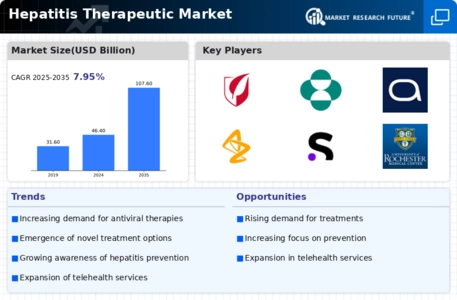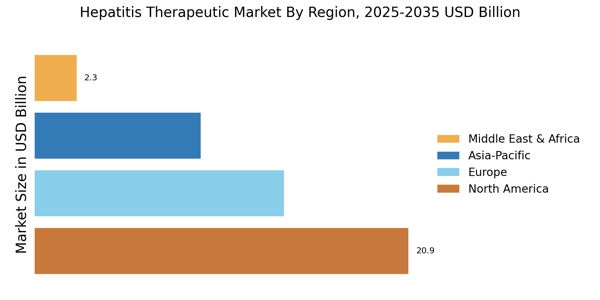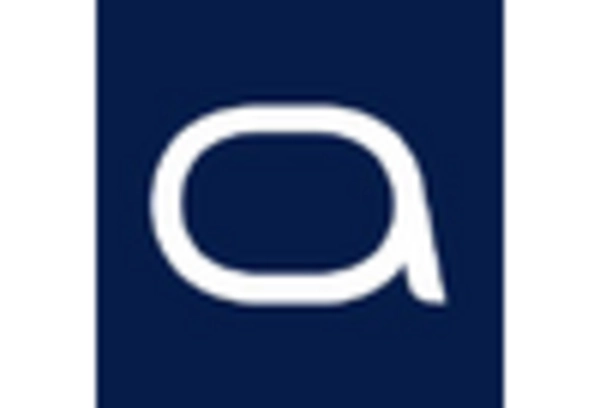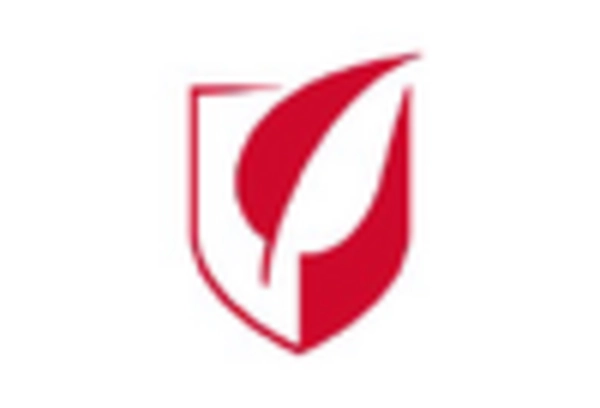Growing Awareness and Education
The growing awareness and education surrounding hepatitis infections are pivotal drivers for the Hepatitis Therapeutic Market. Increased public knowledge about the risks, transmission, and consequences of hepatitis has led to higher rates of testing and diagnosis. Campaigns aimed at educating populations about hepatitis prevention and treatment options have proven effective in reducing stigma and encouraging individuals to seek medical care. This heightened awareness is likely to result in an uptick in demand for therapeutic interventions, as more individuals are diagnosed and treated. Additionally, healthcare providers are becoming more informed about the latest treatment options, which may influence prescribing practices. As awareness continues to rise, the Hepatitis Therapeutic Market is expected to experience sustained growth, driven by an informed patient population seeking effective therapies.
Government Initiatives and Funding
Government initiatives aimed at combating hepatitis infections play a crucial role in shaping the Hepatitis Therapeutic Market. Various countries have implemented national strategies to eliminate hepatitis as a public health threat, which often includes increased funding for research, awareness campaigns, and access to treatment. For instance, the World Health Organization's Global Health Sector Strategy on Viral Hepatitis emphasizes the need for comprehensive approaches to prevention, diagnosis, and treatment. Such initiatives not only raise awareness but also facilitate the allocation of resources towards the development of new therapies. As governments prioritize hepatitis elimination, the resulting financial support and policy frameworks are likely to stimulate growth within the Hepatitis Therapeutic Market, fostering innovation and improving patient access to essential treatments.
Advancements in Treatment Modalities
Recent advancements in treatment modalities for hepatitis have significantly influenced the Hepatitis Therapeutic Market. The introduction of direct-acting antivirals (DAAs) for hepatitis C has revolutionized treatment, offering higher cure rates and shorter treatment durations. These innovations have led to a paradigm shift in how hepatitis is managed, with DAAs demonstrating cure rates exceeding 95% in many cases. Furthermore, ongoing research into combination therapies and novel drug formulations continues to expand the therapeutic landscape. As these advancements become more widely adopted, they are expected to drive market growth, as healthcare providers increasingly prefer effective and patient-friendly treatment options. The evolution of treatment strategies is likely to enhance patient outcomes and contribute to the overall expansion of the Hepatitis Therapeutic Market.
Rising Incidence of Hepatitis Infections
The increasing prevalence of hepatitis infections is a primary driver for the Hepatitis Therapeutic Market. According to recent estimates, millions of individuals are affected by hepatitis B and C worldwide, with the World Health Organization reporting that approximately 325 million people are living with chronic hepatitis B and C infections. This rising incidence necessitates the development and availability of effective therapeutic options, thereby propelling market growth. The demand for antiviral therapies and innovative treatment regimens is expected to surge as healthcare systems strive to manage and treat these infections effectively. Consequently, pharmaceutical companies are investing significantly in research and development to address this growing public health challenge, which is likely to enhance the Hepatitis Therapeutic Market in the coming years.
Emergence of Telemedicine in Hepatitis Care
The emergence of telemedicine as a viable option for hepatitis care is transforming the Hepatitis Therapeutic Market. Telehealth services have gained traction, particularly in regions where access to healthcare facilities is limited. This mode of care allows patients to consult with healthcare providers remotely, facilitating timely diagnosis and treatment initiation. The convenience of telemedicine may encourage more individuals to seek care for hepatitis, thereby increasing the patient pool for therapeutic interventions. Furthermore, telemedicine can enhance patient adherence to treatment regimens through regular follow-ups and monitoring. As healthcare systems continue to integrate telehealth solutions, the Hepatitis Therapeutic Market is likely to benefit from increased patient engagement and improved access to therapies, ultimately contributing to better health outcomes.


















Leave a Comment